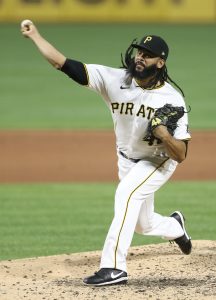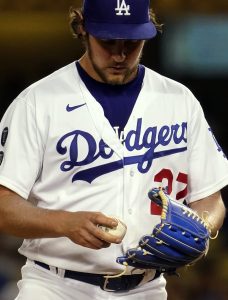At 33-42, the Marlins have dropped nine games back of the division-leading Mets in the National League East. They’re even further behind in the Wild Card picture, and they’d also need to jump each of the Nationals, Braves and Phillies to make a run at the division. That’s decidedly unlikely, with FanGraphs’ updated playoff odds giving the Fish just a 0.2% chance of making the postseason. With their hopes of competing in 2021 all but dashed, the Marlins look to be one of a few teams (the Diamondbacks, Rockies, Pirates, Rangers, Tigers and Orioles are among the others) who are virtually certain to move players off the big league roster before the July 30 trade deadline.
Nevertheless, it doesn’t seem the Miami front office is inclined to relaunch a full teardown. The Marlins are expected to hold onto their young, controllable starting pitchers this summer, reports Joe Frisaro of Man On Second Baseball (Twitter link). Instead, the team is more likely to trade position players on expiring contracts and relievers.
That’s not a particularly surprising development. The Marlins have been amidst a rebuild for the past few seasons, and they’ve started to see the fruits of that effort at the major league level. Miami made last year’s expanded playoff, although they never looked especially likely to compete for the division title over the course of a 162-game season. Still, the development of the controllable young pitching gives plenty of hope for 2022 and beyond.
Each of Pablo López, Trevor Rogers and Sandy Alcantara have had fantastic campaigns to date; López and Alcantara are controllable through 2024, Rogers through 2026. Shoulder troubles have kept Sixto Sánchez from making his season debut, but the Marlins were surely never considering moving the promising 22-year-old even before his series of injuries.
Even without Sánchez, Miami’s rotation has been one of the league’s better units. Marlins starters rank sixth in ERA (3.37) and groundball rate (45.1%), eleventh in SIERA (3.92) and twelfth in strikeout/walk rate differential (15.7 percentage points). Obviously, that hasn’t been reflected in the standings, but the team has been more competitive than its .434 winning percentage would suggest.
Miami has outscored their opponents by 21 runs over the course of the season (which is tied with New York for the fifth-best run differential in the NL). A 6-16 record in one-run games has tanked their postseason chances, but their Pythagorean record (essentially a team’s estimated place in the standings based on run differential) is a much better 41-35. That’s largely a moot point this year, but the encouraging underlying numbers lend additional support to the front office’s apparent belief that they needn’t move core players under long-term control.
Turning to players the Marlins do look likely to move in the coming weeks, none stands out more than star center fielder Starling Marté. A left rib fracture sidelined Marté for a few weeks in April and May, but he’s been stellar when healthy. The 32-year-old is hitting .301/.411/.486 with six home runs across 175 plate appearances this season. Marté has been a productive player for years, but his current offensive output is the best of his career. Most notably, he’s chasing pitches outside the strike zone less than ever, helping to drive a 13.7% walk rate that’s far and away his best mark.
Marté is in the final year of his contract, still due the balance of a $12.5MM salary that’s a bargain relative to his current level of production. Earlier this month, he expressed an interest in signing an extension that would keep him in Miami for the remainder of his career. General manager Kim Ng said there’d been no extension talks to date, though, and it’s certainly possible the Marlins prefer to move Marté for young talent rather than offer a player his age a long-term deal. The M’s could theoretically hold onto Marté through the end of the season and make him a qualifying offer, but they’ll likely be offered a midseason prospect return more valuable than the compensatory draft choice they’d receive if Marté rejects a QO.
Few of the Marlins other realistic trade candidates figure to bring back as much as Marté would, but there’s a handful of players who could attract interest. Corner outfielders Corey Dickerson and Adam Duvall are having passable seasons. The shape of their production differs (Dickerson’s hitting for average and getting on base but not hitting for much power, Duvall has slugged sixteen homers but has a lowly .266 OBP), but they’ve both been average offensive players in aggregate.
Dickerson’s due the remainder of a $9.5MM salary, while Duvall is making $5MM this year (including a $3MM buyout of a 2022 mutual option). The Marlins might have to pay down some of that respective money to facilitate trades, but each player could hold modest appeal to an outfield-needy club. (Dickerson is currently on the IL with a left foot contusion). First baseman Jesús Aguilar is having a solid season, hitting .260/.321/.453. He’s controllable through 2022 via arbitration, but Miami could move him, particularly if they’d be disinclined to offer him a raise on his current $4.3MM salary next year.
The Marlins also have a host of affordable relievers who could hold appeal to other clubs. Dylan Floro and Richard Bleier are veteran ground-ball specialists. Ross Detwiler and John Curtiss are missing bats at above-average rates. Yimi García and Anthony Bass have had fine, if unexciting, seasons.
Perhaps most interestingly, rookie Anthony Bender has been a revelation. The 26-year-old hasn’t allowed an earned run over his first 21 1/3 MLB innings. He’s averaging 97.5 MPH on his sinker, missing bats (29.9% strikeout rate), inducing tons of grounders (53.2%) and avoiding walks (6.5%). Miami controls the righty for six-plus seasons, so they could certainly elect to hang onto him in hopes that he cements himself as one of the sport’s top relievers. His breakout isn’t all that dissimilar from Nick Anderson’s in 2019, though, and the Marlins elected to move Anderson at the deadline that year. (Notably, that was under previous general manager Michael Hill, not Ng).
Even if the Marlins don’t listen to offers on their cornerstone rotation pieces, contending teams figure to be in touch with Ng and her front office in the coming weeks. The Marlins have plenty of complementary veterans and quality relievers who could help contenders down the stretch.


